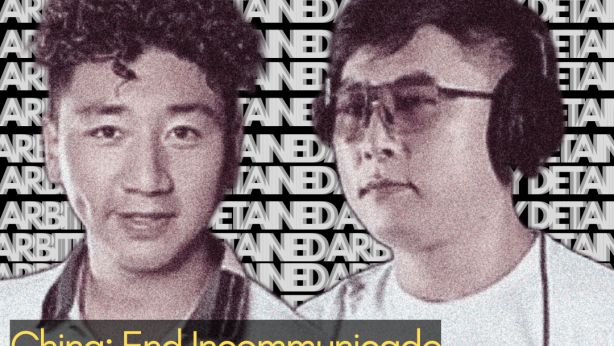China admits challenges to human rights protection
On 11 June 2012, China announced its second National Human Rights Action Plan (NHRAP)1 for the years 2012 to 2015 saying it has a ‘long way to go before fully allowing people to enjoy human right.’
The new plan also highlighted religious freedom stating that the Chinese government will ‘protect religious activities in accordance with the law,’ reported Xinhua, the official Chinese news agency. Like the NHRAP (2009-2010), the new document guarantees state protection for a host of civil and political rights, as well as economic, social and cultural rights.
The NHRAP (2009-2010) was the Chinese government’s first formal document that ‘guaranteed’ human rights to Chinese citizens and pledged to address human rights violations in the People’s Republic of China.
It is difficult to say whether this new plan will bring any real improvement in the human rights situation in Tibet and China. Given the dismal performance during the first plan period, any early expectations might end up being premature and naively optimistic. The NHRAP (2009-2010) generated some enthusiasm and expectation among human rights activists, who called it a giant step forward in the right direction, and expressed hope that the document’s provisions would be implemented to improve the dismal state of human rights in the PRC and not remain just another tool for external propaganda. But despair set in by the end of the plan period. There was no notable change in the human rights situation in Tibet or China.
On 14 July 2011, the State Council Information Office of the PRC issued the Assessment Report on the NHRAP (2009-2010), prepared by a group of officially approved experts and scholars. The report called the government’s performance during the action plan period a success saying all provisions and guarantees made in the plan were implemented within the two-year time frame.
In 2010, TCHRD reported a total of 831 known political prisoners in Tibet out of which 188 were arrested in the same year. In 2009, TCHRD managed to identify the names of some 2,000 Tibetans out of estimated 6,500 who had been arrested, detained and released since March 2008. TCHRD’s Annual Report 2009 called the year one of the worst years for religious freedom in Tibet.
In 2010, from 18 to 20 January, the Central Committee of Communist Party of China (CPC) and the State Council convened the Fifth Tibet Work Forum, a high-level strategy meeting to decide on policy outlines for Tibet from 2010-2020. The Fifth Tibet Work Forum adopted a two-pronged strategy on Tibet: to promote ‘leap forward development’ and to ‘maintain long-term stability’ in Tibet. After the meeting, the scale and intensity of repressive official practices have deepened in Tibet as the authorities continue to ‘strike harder’ than before. It is now official priority to identify and ‘strike hard’ on causes of instability, to thoroughly deepen the campaign of patriotic re-education and legal education particularly in the monastic communities, to regulate the monastic activities and religious practices according to domestic laws and party directives.
From 20-21 August 2010, the Ministry of Public Security held a meeting in Lhasa on the public security work situation in Tibet Autonomous Region (TAR) and Tibetan areas in Chinese provinces of Qinghai, Sichuan, Gansu, and Yunnan. Decisions taken at the meeting included cracking down hard on separatist activities, promoting development and protecting stability, intensifying border control and restricting travel movements. It was also decided to upgrade the uniforms, gadgets, tools, and weaponry of the Public Security personnel.
From 14 to 15 August 2010, in Shigatse (Chinese: Xigaze) Prefecture, TAR, the Central Committee of the United Front Work Department of the CPC held a meeting to discuss the work situation in Tibetan monastic community. On 30 September 2010, the TAR Religious Affairs Bureau issued a 44-point regulation called ‘Management Measures for Tibetan Buddhist Monasteries and Temples’ to further control monastic activities. Also known as Order No. 8, the regulation went into effect on 1 November 2010. It is aimed at creating clear distance between monastic institutions in Tibet and ‘foreign influence’ and ‘separatist activities’. These regulations have violated the Tibetan people’s right to religious freedom, which is one of the non-derogable rights enshrined in major international human rights conventions.
A 2011 study by Human Rights Watch pointed out that by 2009, per capita annual spending on public security in Ngaba had reached 779 RMB, five times the average spent per person on public security in non-Tibetan areas in Sichuan Province. The report attributes high security spending to self-immolation protests, adding, ‘heavy-handed security exacerbates [Tibetan] grievances, desperation.’ China’s overall planned domestic security spending is higher than its external security budget.
Endnote:
1 Full Text: National Human Rights Action Plan of China (2012-2015), Availablehttp://news.xinhuanet.com/english/china/2012-06/11/c_131645029.htm


